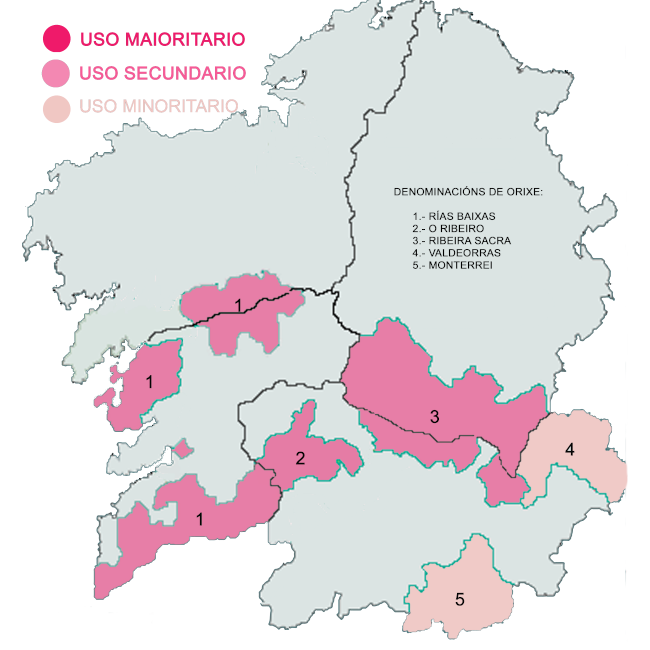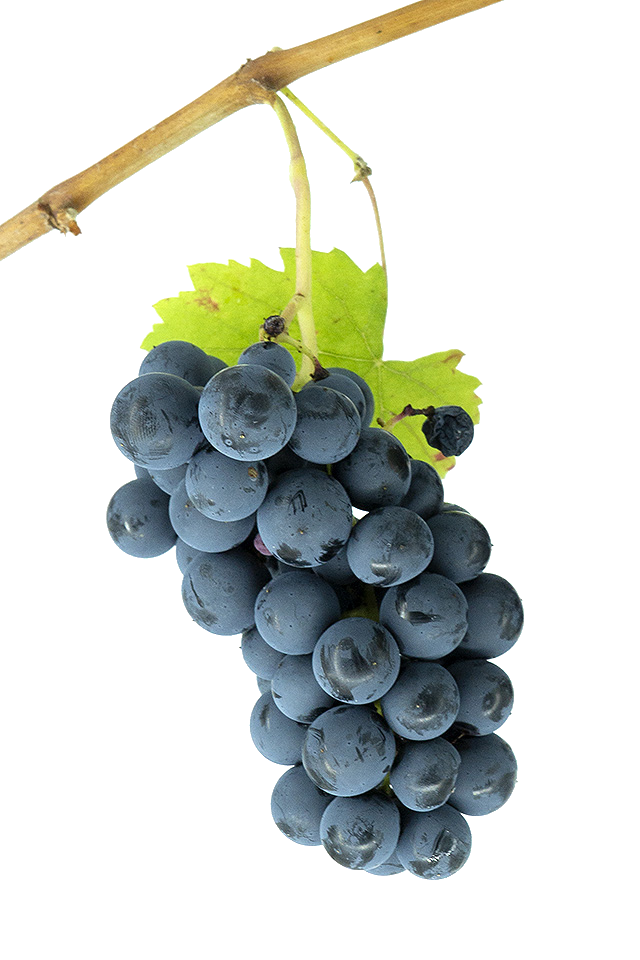SINÓNIMOS: loureira tinta (Spain-Galicia), tintilla (Spain-Galicia), tinta país (Spain-Galicia), verdello tinto (Spain-Galicia), pazao (Portugal), vinhao (Portugal).
 The second most widespread red grape planted in Galicia. It is the principal red grape in the Rías Baixas area and the second in the Ribeiro, Ribeira Sacra, Valdeorras and Monterrei areas. Although in the Rías Baixas D.O. the sousón and loureira tinta varieties are differentiated, the Biological Mission of Galicia identifies them as the same variety, as they share the same DNA.
The second most widespread red grape planted in Galicia. It is the principal red grape in the Rías Baixas area and the second in the Ribeiro, Ribeira Sacra, Valdeorras and Monterrei areas. Although in the Rías Baixas D.O. the sousón and loureira tinta varieties are differentiated, the Biological Mission of Galicia identifies them as the same variety, as they share the same DNA.
 The plant is drought-resistant with spherical grapes; fertility is medium with scant vigour and productivity. It has a long ripening cycle and is highly sensitive to oidium, moderately sensitive to mildew and resistant to botrytis. The clusters of the sousón are small in size with medium compactness. The grapes are circular, small in size and blackish-blue in colour. The skin ranges from medium to thin.
The plant is drought-resistant with spherical grapes; fertility is medium with scant vigour and productivity. It has a long ripening cycle and is highly sensitive to oidium, moderately sensitive to mildew and resistant to botrytis. The clusters of the sousón are small in size with medium compactness. The grapes are circular, small in size and blackish-blue in colour. The skin ranges from medium to thin.
 Wines produced with sousón can reach high levels of alcohol, between 12.5 and 14 degrees, with a good level of acidity. They develop well and are highly suitable for ageing in cask. With an excellent structure and intense colouring, in terms of aroma it is notable for its notes of dark berries and flowers of moderate intensity. They are wines that evolve well in the bottle, owing to which they are highly suitable for ageing in casks. Owing to its high polyphenolic potential and aromatic complexity, it is often blended with other red grapes, although there is an increasing trend towards using this variety in outstanding single-varietal wines.
Wines produced with sousón can reach high levels of alcohol, between 12.5 and 14 degrees, with a good level of acidity. They develop well and are highly suitable for ageing in cask. With an excellent structure and intense colouring, in terms of aroma it is notable for its notes of dark berries and flowers of moderate intensity. They are wines that evolve well in the bottle, owing to which they are highly suitable for ageing in casks. Owing to its high polyphenolic potential and aromatic complexity, it is often blended with other red grapes, although there is an increasing trend towards using this variety in outstanding single-varietal wines.









